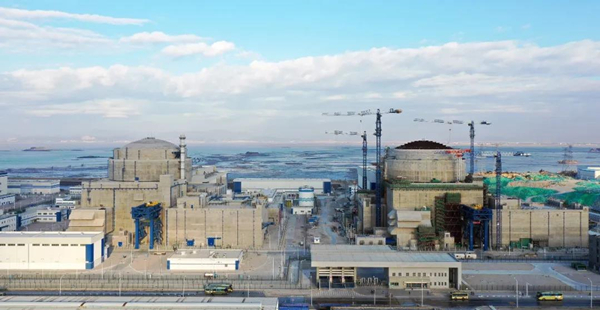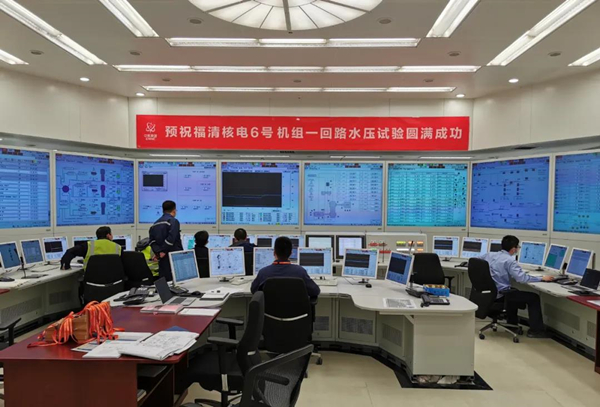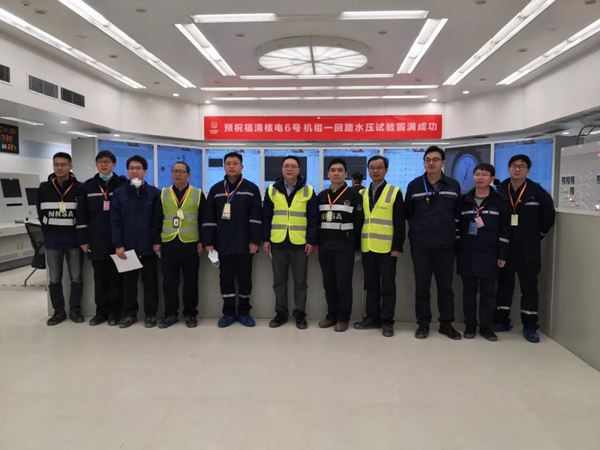Cold functional testing of Hualong One at Fuqing Nuclear Power succeeds

Cold functional tests on the No 6 unit of the Fuqing nuclear power plant using Hualong One technology in Fuqing, Southeast China's Fujian province, have been completed. [Photo/CNNC]
Cold functional tests on a Hualong One (HPR1000) demonstration project — the No 6 unit at the Fuqing nuclear power plant of China National Nuclear Corporation (CNNC) in Fuqing, Southeast China's Fujian province — were completed on January 11.
Cold functional testing is a large-scale comprehensive special commissioning step required in nuclear power plants.
Its main purpose is to evaluate the performance of the primary circuit system, equipment and auxiliary piping under high-pressure conditions, and to carry out relevant tests of the main and auxiliary systems under various pressure platforms. It is the first comprehensive testing of the whole reactor's performance.

Hualong One is the CNNC's third-generation nuclear power technology with full intellectual property rights. It was developed and designed based on more than 30 years of experience in nuclear power research, design, manufacturing, construction and operation. With a design life of 60 years, the Hualong One reactor adopts a 177-core design that replenishes the fuel every 18 months, with a utilization rate of 90 percent. It innovatively uses a combination of "passive and active" safety systems with double containment, which meets the highest international safety standards

Hualong One is one of the most widely accepted third-generation nuclear power reactors in the current nuclear power market, and is a major landmark achievement in the innovative development of nuclear power in China. At present, CNNC has six Hualong One nuclear power units under construction at home and abroad, with the safety and quality of the construction projects in a good state of control. The world's first nuclear power unit using Hualong One technology, the No 5 unit of the Fuqing nuclear power plant, was connected to the grid on November 27, 2020.
- China Institute of Atomic Energy
- Nuclear Power Institute of China
- Southwestern Institute of Physics
- China Nuclear Power Operation Technology Corporation, Ltd.
- China Nuclear Power Engineering Co., Ltd.
- China Institute for Radiation Protection
- Beijing Research Institute of Uranium Geology (BRIUG)
- China Institute of Nuclear Industry Strategy (CINIS)
- China Nuclear Mining Science and Technology Corporation


